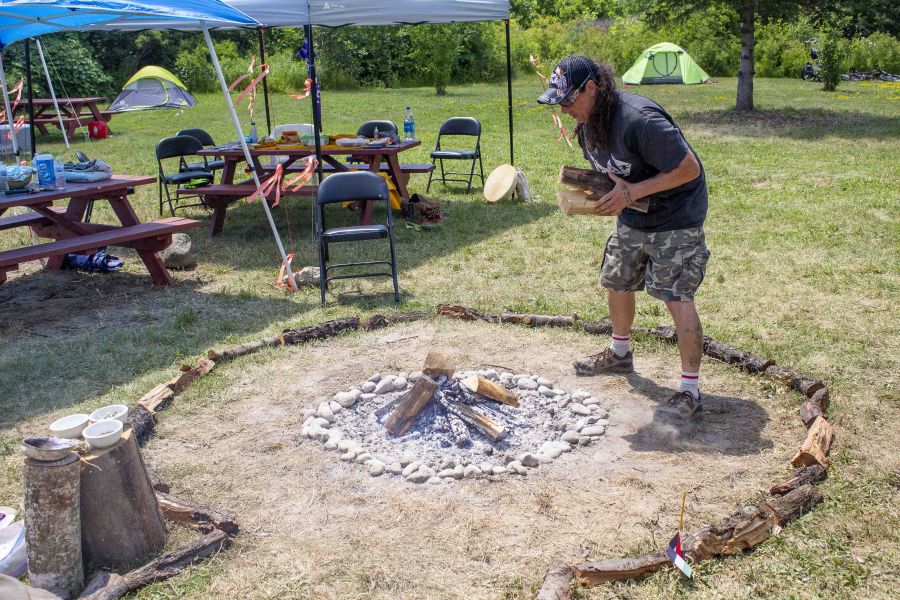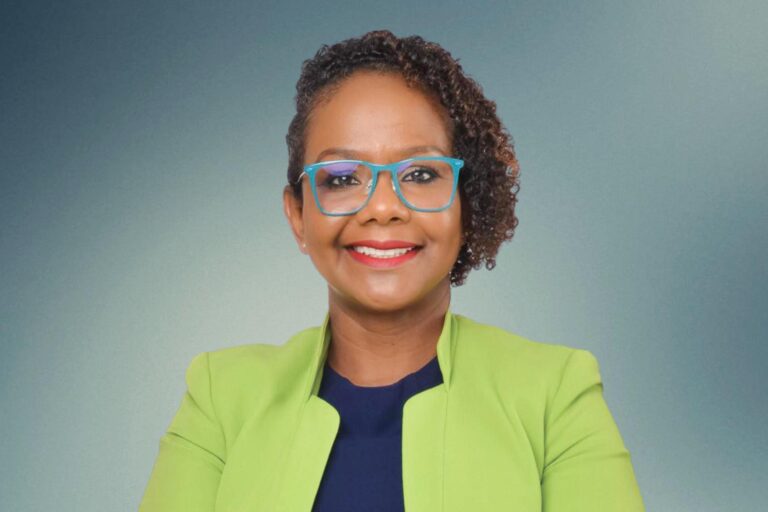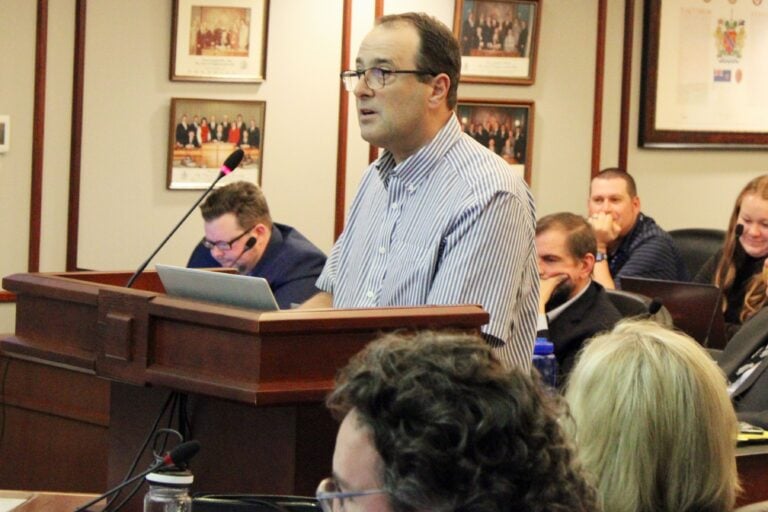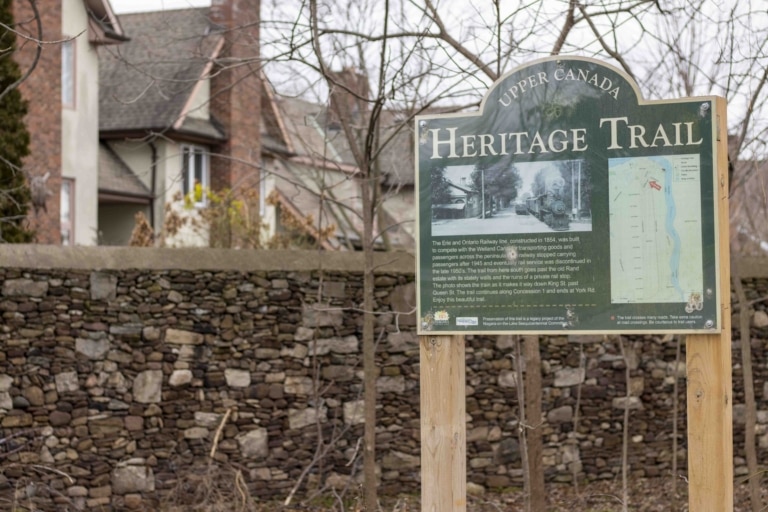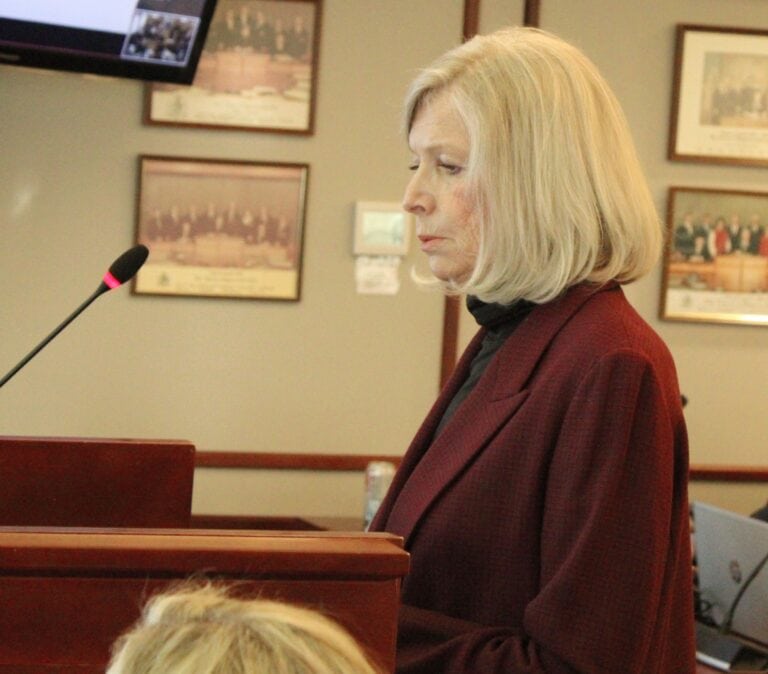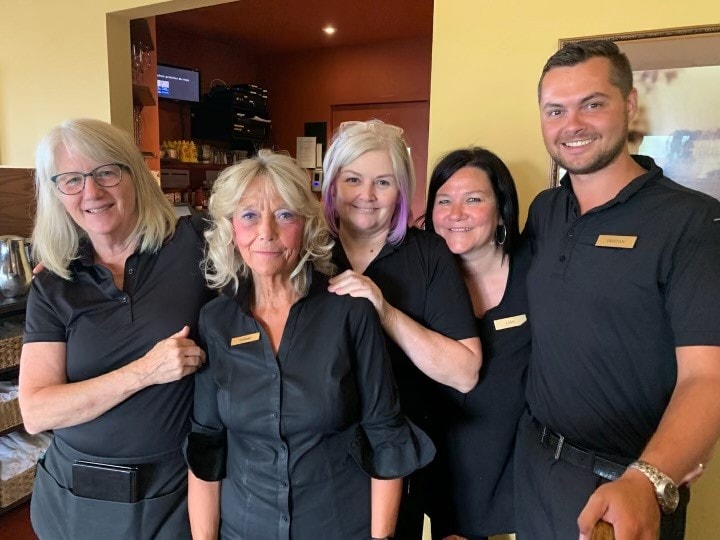As more bodies are uncovered at residential school properties across the country, the Indigenous community in Niagara is rallying for calls to action and gathering for solemn grieving.
The Niagara Regional Native Centre started a seven-day sacred fire last Friday to honour the dead children uncovered on old residential school sites.
The centre had an air of solemnity about it as Indigenous and non-Indigenous people gathered to find healing around the sacred fire.
“I can’t think of any Indigenous person in my circle that isn’t somehow affected by residential schools,” the centre's executive director, Karl Dockstader, said in an interview at the fire.
The sacred fire is a traditional ceremony held by Indigenous communities to promote wellness and healing. Earlier, after the bodies of 215 children were found on the property of the Kamloops Indian Residential School in British Columbia, the centre held a 24-hour sacred fire.
With the recent discovery of 751 bodies at the Marieval Indian Residential school in Saskatchewan, this new sacred fire will last a week. There will always be a fire-keeper tending it, through the wind, rain, night and day.
“You get connected to the land. You don’t have to be a spiritual person in an Indigenous sense to appreciate the growth,” Dockstader said about the sacred fire.
“It’s a point where Indigenous and non-Indigenous people connect.”
The discoveries at residential schools have grown even more painful for Indigenous communities.
“The scale is getting shocking,” Dockstader said.
But the trauma of residential school systems is not just Indigenous history. Canadians have to recognize it is the legacy of their country’s actions, he said.
“This is shared history. The residential school discoveries aren’t about Indigenous people as much as they are about what Canadians did.”
Dockstader said that having Canadians educate themselves about the residential school system is important, but the key thing is earnestly listening to Indigenous Peoples.
“Just believe us, that’s what’s been the hardest. Even before the TRC, we’ve been talking about how there was more children, we’ve been talking about how pervasive racism is, we’ve been talking about how there was an active plan to erase Indigenous people,” he said.
“What’s been difficult is that, for generations we’ve been saying this and Canadians have said, ‘Well, that can’t be.’ You’re diminishing and minimizing it.”
Keeping the fire for seven straight days is no easy task, but in such times of pain fire-keeper Fred Bowering is wholeheartedly committed.
“I’ll be here for the whole seven days. I’ll maybe leave for an hour to feed my dog,” Bowering said.
He said truth and reconciliation are important, but feels an even more important word often gets left out of the equation.
“Justice. Truth, reconciliation AND justice,” he said.
An increasing number of people are calling for a Canada Day boycott in light of the horrors at residential schools.
“It’s like having a party at your house while your next-door neighbour is having a funeral,” Dockstader said about the national holiday.
“It’s not a tasteful move, especially when there are thousands of Indigenous people living in Niagara.”
The Canadian government built the residential school system. What is frustrating for Dockstader is that the pathway to reconciliation has already been laid and yet the government refuses to walk it.
The government needs to “follow the recommendations (of the Truth and Reconciliation Commission).”
It isn’t only the federal government that Dockstader is frustrated with. He criticized a lack of action from the Town of Niagara-on-the-Lake, as well.
“In 2016, (Niagara-on-the-Lake) marked a year of reconciliation – they put a motion through.”
Unfortunately, “nothing really happened. It wasn’t followed by any substantive action.”
Dockstader acknowledged that many landmark events in Canadian history took place in the Niagara region. He said he understands Canadian pride in the area as a product of that.
“But as we’re learning, through people like Egerton Ryerson and John A. Macdonald, that history is problematic,” he said.
Dockstader emphasized individuals need to come to these conclusions on their own, by way of self-educating and listening to Indigenous Peoples and leaders.
More difficult than dealing with the Canadian government or non-Indigenous people for Dockstader and the Indigenous community has been the Catholic church.
“It’s so complex,” he said, struggling for a way to articulate the chasm the church has created between itself and the accusations stemming from their century and a half of running residential schools.
“The Catholic church has done a pretty shitty job of handling all of this, (from residential schools) to contemporary times,” he said.
“You can’t draw blood from a stone. They don’t see that they’re problematic, so I don’t even know where a good starting point with them is.”
In the face of this overwhelming grief, Dockstader couldn’t help but notice the dualities taking place around him at the sacred fire as some people grieved while others enjoyed company.
There’s “people here that are grieving and I’m thinking how awkward it must be, here I am laughing with my friends,” he said.
“But then I realized that’s how we cope. In the midst of the residential schools and while kids were being taken during the Sixties Scoop.”
The Sixties Scoop was a period from the late 1950s until the 1980s when Canadian policy allowed child-care workers to take Indigenous children as young as newborns from their families to be put in non-Indigenous foster homes. It is estimated about 20,000 children were taken during this period.
Dockstader was almost one of them.
“My parents brought (me and my siblings) from Oneida and moved to Fort Erie,” he said.
“The reason they did that is they were residential school children themselves. So, when the vehicles started to show up to take kids for the Sixties Scoop, they did the math about what was going to happen, and they left.”
“They started their life here specifically to keep their kids from being apprehended. Otherwise, it would have been another generation taken, and who knows what after that.”



